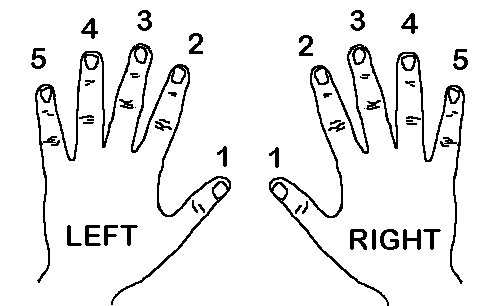How to learn Music || Reading Piano Notes in Easy Steps

Step 1: Label white spaces with FACE and EGBDF for the treble clef
If you want to learn how to read music you should start by looking at the treble clef first. This is the staff that shows which notes to play with your right hand. If you are learning for the first time, you must familiarize yourself with the letter names of the lines and spaces. On your staff paper, label the white spaces with FACE starting with the first space at the bottom of the page and going up, then the lines EGBDF starting at the bottom line going to the top line. There are little tricks to help you remember the names of the lines and spaces – for example, just remember the phrase “Every Good Boy Deserves Fudge.” Work on memorizing this a little bit each day.

Step 2: Write the note letter names
Now take a piece of music you want to learn, and underneath the music notes of the right hand in the treble clef, write the letter names. (Use a pencil, that way you can erase it later!) This isn’t a great habit to get into in the long run, but it’s perfectly fine for just starting out. If there is one note you’re having a hard time remembering specifically, feel free to just write that one note letter name. Keep in mind you’re only focusing on the white notes on a piano for now. Don’t worry about the black keys, (your sharps and flats), just yet.
Step 3: Memorize letter names, and move onto bass clef
After you’ve memorized all of the letter names on the lines and spaces for your right hand (the treble clef), you can move on to reading piano notes on the bass clef, where the notes on the lines and spaces will be played with your left hand.
Step 4: Name your spaces ACEGB and GBDFA
Practice drawing the bass clef, which will start on the F line. Then with the spaces at the bottom of the page, name your spaces ACEGB (remember “All Cows Eat Grass,” and don’t forget to add your B at the top!). Next, name your lines starting at the bottom of the page GBDFA (“Good Boys Deserve Fudge Always”). Memorize these notations as well. Now transfer these letter names of the lines and spaces to your piano song from step #2, and name all the notes with your left hand in the bass clef.
Step 5: Find a hand diagram and label each finger 1-5
There is another method with numbers that may be easier for you to read. Find a diagram of your hands and looking at the right hand starting with your thumb, label each finger with 1-5. Do the same with your left hand. There are many easy piano songs to begin with, such as “Three Blind Mice”, “Hot Cross Buns”, “Mary Had a Little Lamb”, and “Jingle Bells” that only use notes C-G, or numbers 1-5. Starting on middle C of the piano, put both thumbs on the note, and align both your hands so that your right pinky ends on 5 (G) and your left pinky lands on 5 (F). You can write in the numbers next to letter names, if that helps you more. Remember to begin with only the white notes on a piano.

Now, as you read through your song, play and sing the letter or numbers while playing, which will help you memorize the names of numbers of the notes on a piano. Once you’ve practiced this for a while, try erasing the letter names and testing yourself to see if you still remember the playing pattern and tune of the song.
With these steps, reading piano notes and music will start to become natural to you. For each piece you learn, write in the letter names or fingers, and then erase them when you get comfortable enough. Pretty soon you won’t even need to write them in